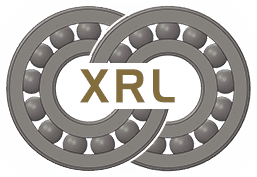The rotational speed of the bearing plays a key role in the heating factor of the bearing. Each bearing model has its own limit speed, which is determined by physical characteristics such as size, type and structure. The limit speed refers to the maximum working speed of the bearing ( Usually used r / min), beyond this limit will cause the bearing temperature to rise, the lubricant is dry, and even the bearing is stuck. The range of speeds required for the application will help determine which type of bearing to use. Most bearing manufacturers’ catalogues provide limit values for their products. It has been proven that working at temperatures below 90% of the limit speed is better.
Looking at the requirements of the working speed on the bearing, tell everyone the following:
1. Ball bearings have higher limit speed and rotation accuracy than roller bearings, so ball bearings should be preferred when moving at high speeds.
2. Under the same inner diameter, the smaller the outer diameter, the smaller the rolling element, and the smaller the centrifugal inertia force of the rolling element on the foreign raceway during operation, so it is suitable for working at higher speeds. . Therefore, at high speeds, bearings with smaller outer diameters in the same diameter series should be used. If a bearing with a smaller outer diameter is used and the bearing capacity is not sufficient, the same bearing can be installed together or a wide series of bearings can be considered.
3. The material and structure of the cage have a great influence on the bearing speed. The solid cage allows for higher speeds than the stamped cage, and the bronze solid cage allows for higher speeds.
Generally speaking, in the case of higher speed working, deep groove ball bearings, angular contact bearings and cylindrical roller bearings should be used; in the case of lower speed working, tapered roller bearings can be used. The limit speed of tapered roller bearings is generally about 65% of deep groove ball bearings, 70% of cylindrical roller bearings, and 60% of angular contact ball bearings. Thrust ball bearings have a low limit speed and can only be used in lower speed applications.
Post time: Jun-09-2021
